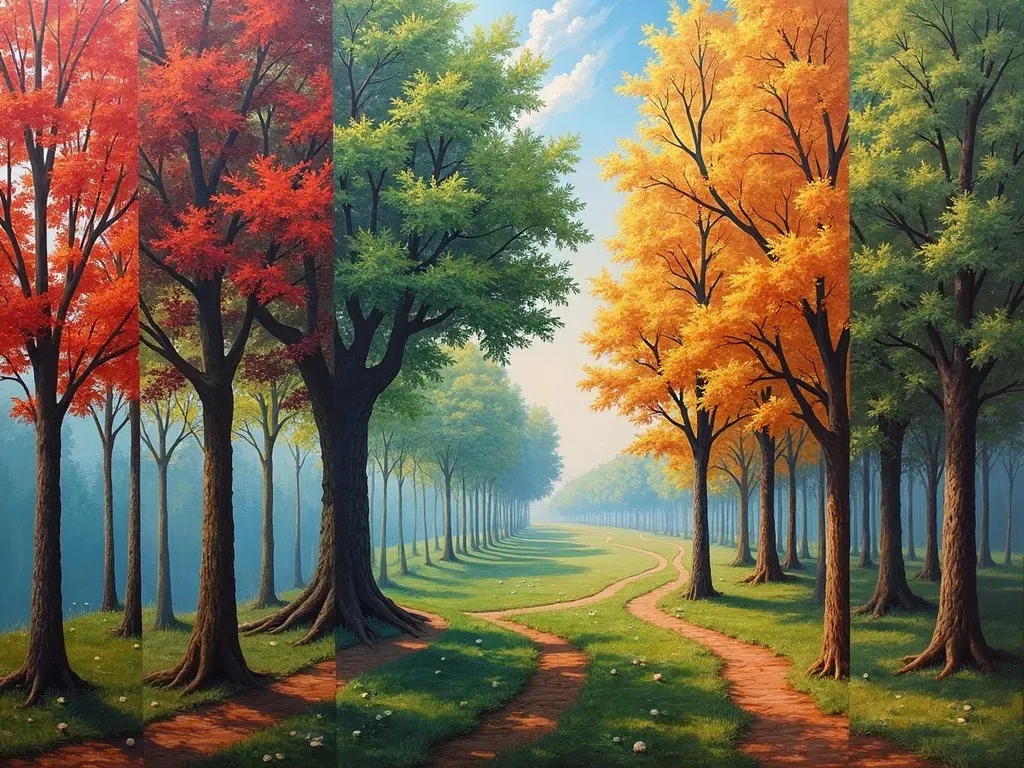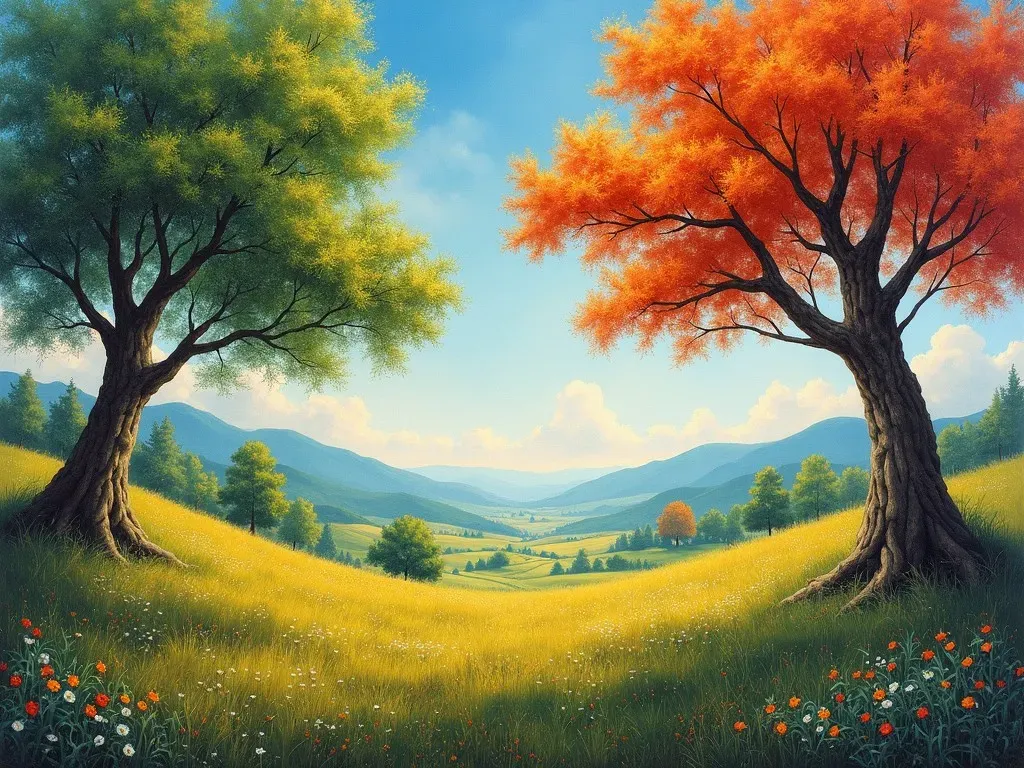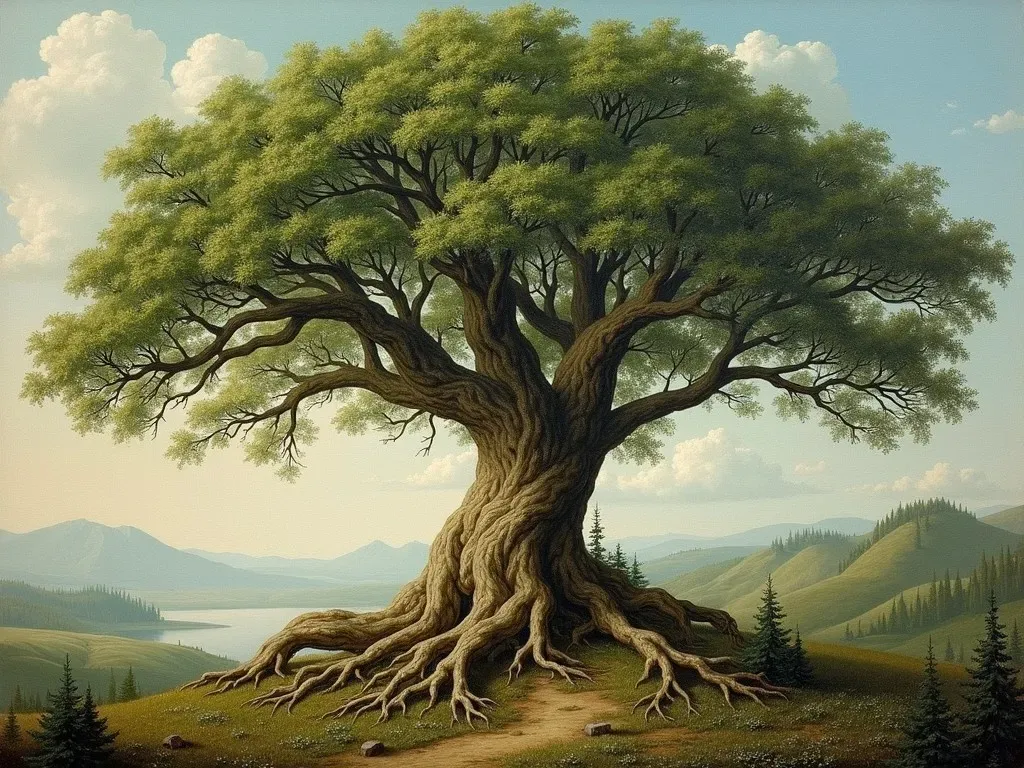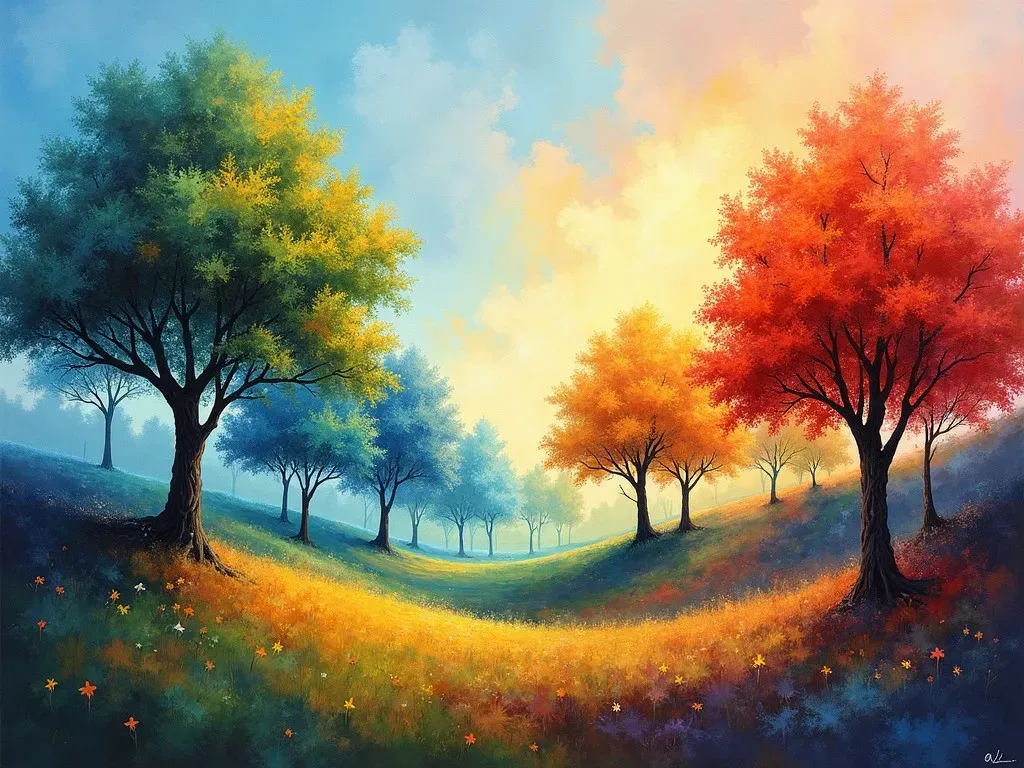Famous tree paintings have captivated art lovers for generations, showcasing the beauty and symbolism of trees through history. Artists have often turned to trees as subjects, highlighting their aesthetic appeal and the emotions they evoke. From the intricate details of leaf patterns to the vastness of ancient forests, these paintings represent a profound connection between nature and human creativity.
The Allure of Trees in Art
Throughout history, trees have served as powerful symbols of life, growth, and nature. The art world has seen many renowned painters who embraced trees as central themes in their work. Notable Artists like Vincent van Gogh, claude monet, and Gustav Klimt have created masterpieces that celebrate the beauty and significance of these natural wonders.
Table: Notable Artists and Their Famous Tree Paintings
| Artist | Painting Title | Year | Style |
|---|---|---|---|
| Vincent van Gogh | Almond Blossoms | 1890 | Post-Impressionism |
| Claude Monet | The Four Trees | 1891 | Impressionism |
| Gustav Klimt | Rosebushes Under the Trees | c. 1905 | Symbolism |
| Frederic Edwin Church | Heart of the Andes | 1859 | Luminism |
| Albert Bierstadt | Giant Redwood Trees of California | 1874 | Romanticism |
Famous Tree Paintings That Changed Art History
-
Almond Blossoms – Vincent van Gogh
This vivid painting showcases branches adorned with fragrant blossoms set against a striking blue sky. Vincent painted this work as a gift for his newborn nephew, symbolizing new life and rebirth.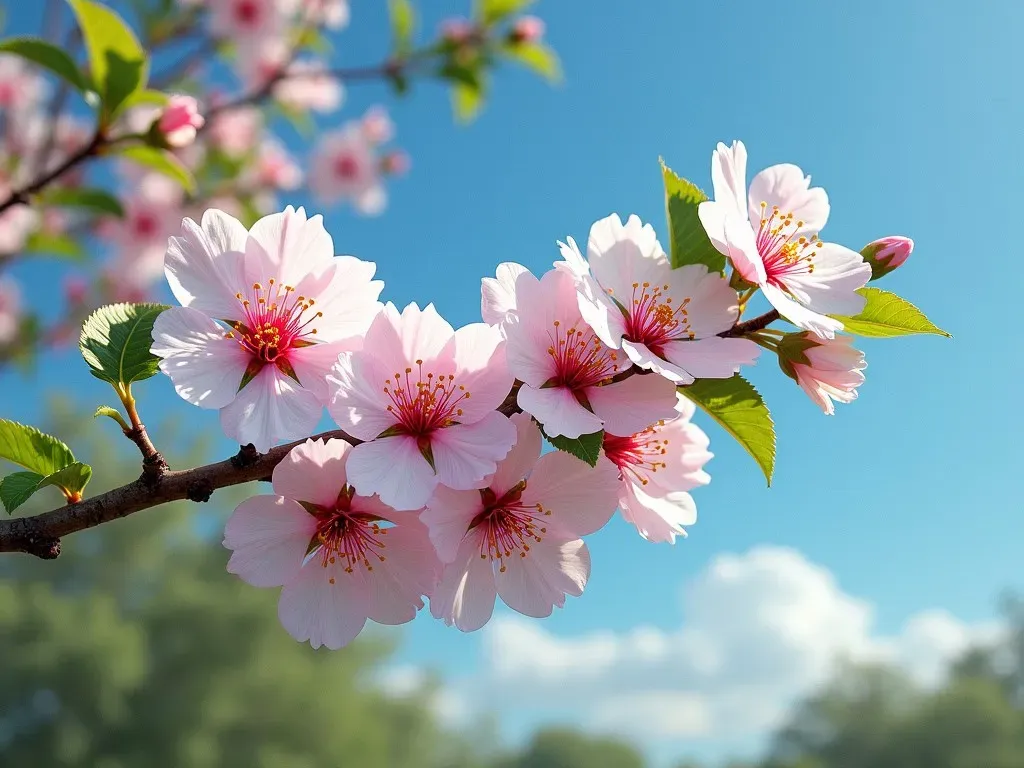
-
Forest in Autumn – Gustave Courbet
Courbet brilliantly captures the changing colors of a European forest in the fall. The rich hues of the trees create a natural tapestry that evokes tranquility and beauty.
-
The Four Trees – Claude Monet
Monet’s impressionistic style captures the essence of nature with his depiction of four majestic trees surrounded by soft light. This painting is an excellent representation of his garden in Giverny.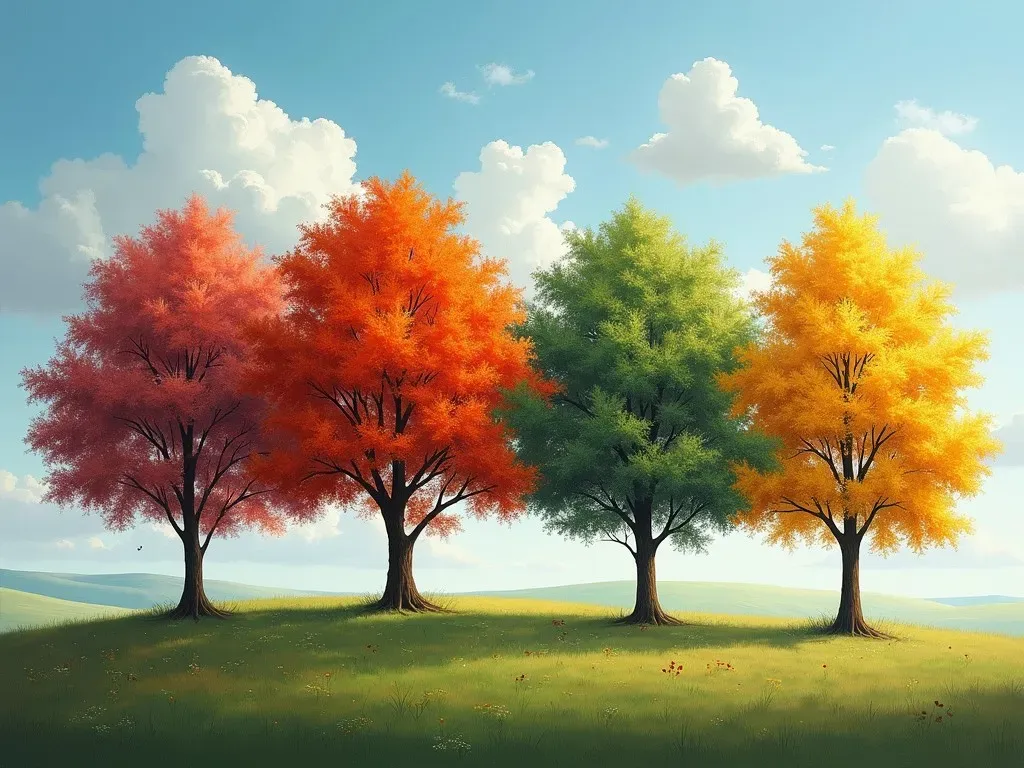
Famous Tree Artists: A Closer Look
Several artists are particularly renowned for their tree paintings. Here’s an overview:
-
Vincent van Gogh:
His cypress trees stand out in pieces like The Starry Night and Wheat Field with Cypresses. His vibrant brushwork and emotional depth convey a profound connection to nature’s beauty. -
Claude Monet:
Known for his impressionistic style, Monet often painted his garden in Giverny, where trees played a crucial role in the scenery. His piece The Four Trees highlights the delicate interplay of light and color. -
Gustav Klimt:
Klimt’s works often featured ornamental trees that symbolize growth and vitality. His painting Rosebushes Under the Trees reflects his fascination with nature and its aesthetic qualities.
Reference Video
The Symbolism of Trees in Art
Trees hold deep symbolic meanings across various cultures and contexts. Here are some interpretations often associated with trees in art:
- Life and Growth: Trees often represent life cycles and regeneration due to their seasonal changes. In art, they symbolize new beginnings and continuity.
- Stability and Strength: The sturdy nature of trees may symbolize resilience, grounding, and stability. They often serve as metaphors for endurance in the face of challenges.
- Connection to Nature: Artists emphasize the beauty of trees to foster a connection with the natural world, reminding viewers of the importance of preserving and valuing our environment.
List: The Top 5 Iconic Tree Paintings
Here’s a quick look at five iconic tree paintings that have left a mark on art history:
- Almond Blossoms – Vincent van Gogh
- Forest in Autumn – Gustave Courbet
- The Four Trees – Claude Monet
- Heart of the Andes – Frederic Edwin Church
- Giant Redwood Trees of California – Albert Bierstadt
The Role of Trees in Various Art Movements
Different art movements have embraced tree imagery in unique ways, conveying diverse emotional and philosophical themes:
- Impressionism: Artists like Monet and Sisley captured the ephemeral qualities of light on trees, using vibrant colors to convey the essence of fleeting moments.
- Romanticism: Painters like Bierstadt emphasized majestic landscapes with towering trees, exploring nature’s sublime power and beauty.
- Post-Impressionism: Artists such as Van Gogh used bold colors and thick brushstrokes to express emotional depth through trees, focusing on individual perspectives.
Frequently Asked Questions (FAQs)
Q1: Who painted the famous Almond Blossoms?
A1: Vincent van Gogh painted Almond Blossoms in 1890 as a gift for his newborn nephew.
Q2: What does the cypress tree symbolize in Van Gogh’s paintings?
A2: In Van Gogh’s works, cypress trees often symbolize death and immortality, reflecting a connection between the earth and the heavens.
Q3: How did trees influence Impressionist artists?
A3: Impressionist artists aimed to capture the beauty of light and its effect on nature, leading to a focus on trees as subjects through changing seasons and different times of day.
Q4: Why are tree paintings important in art history?
A4: Tree paintings represent not only the aesthetic appeal of nature but also convey deeper meanings associated with life, growth, and human connection to the environment.
Q5: Where can I find more information about famous tree paintings?
A5: For more detailed insights into famous tree paintings, you can explore Google Arts & Culture.
Conclusion
Famous tree paintings provide a glimpse into the intricate relationship between nature and art. From Vincent van Gogh’s joyful blossoms to Claude Monet’s serene landscapes, these artworks remind us of the beauty that trees bring to our world. Artists have skillfully used tree imagery to evoke emotions, challenge perceptions, and inspire awe—a legacy that continues to resonate with audiences today.
